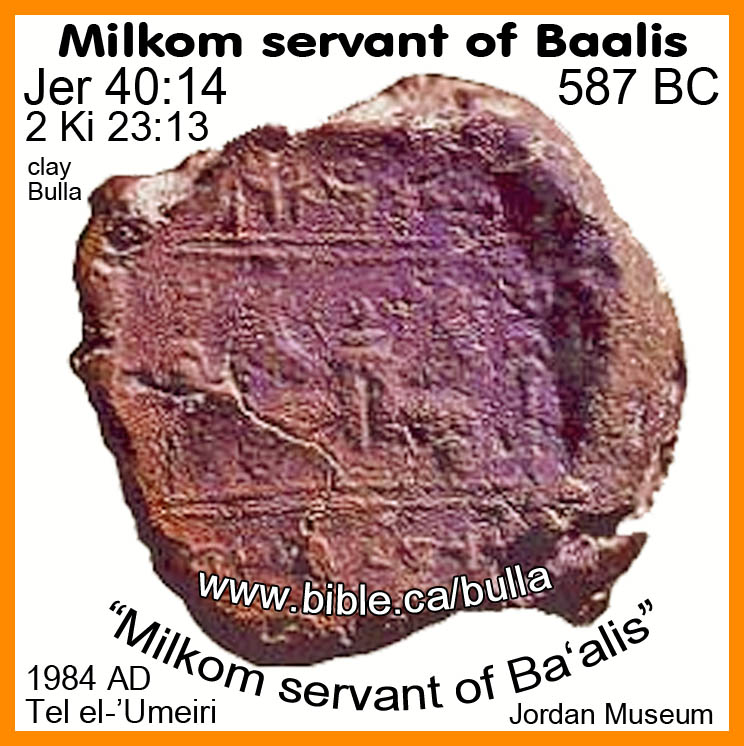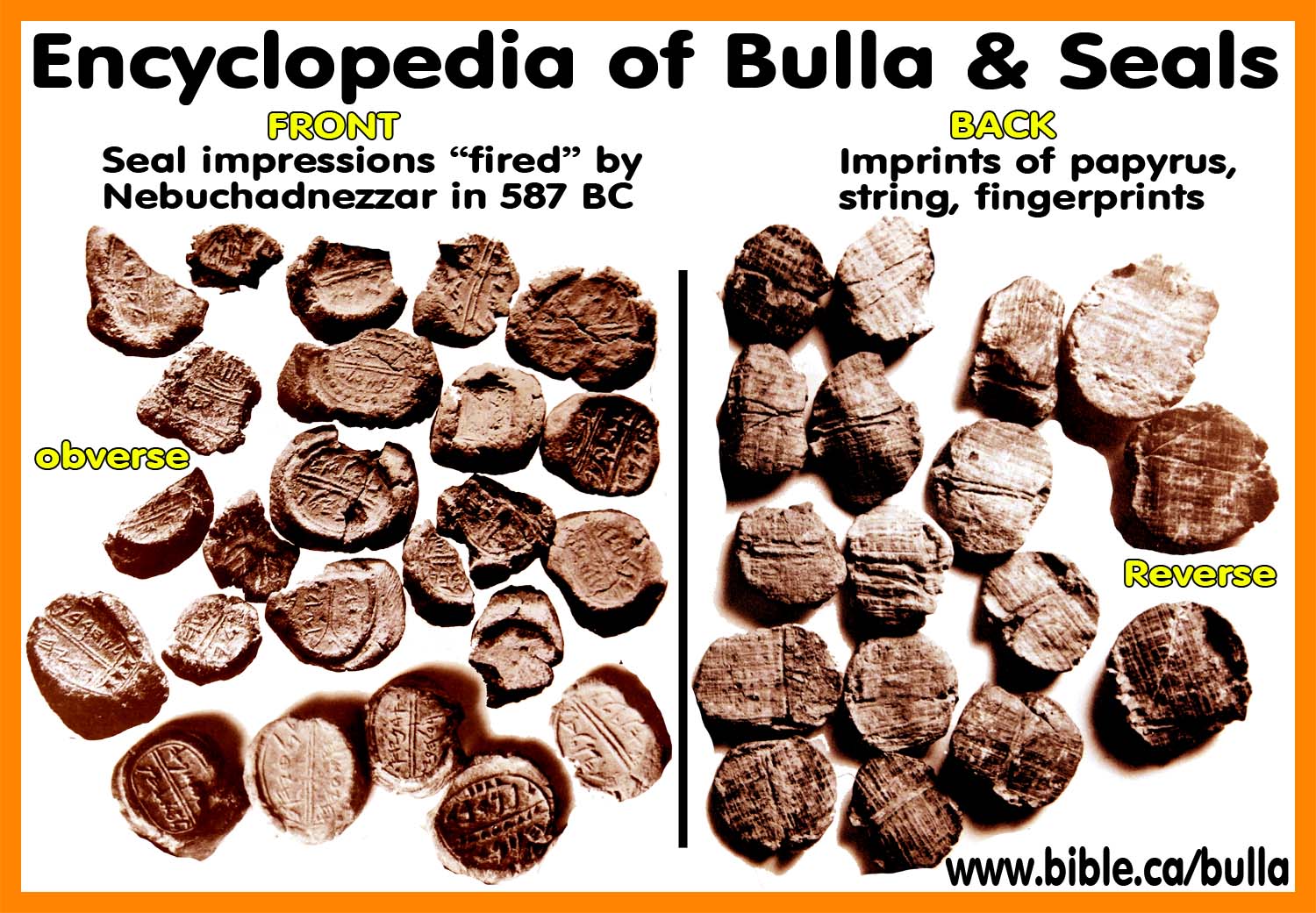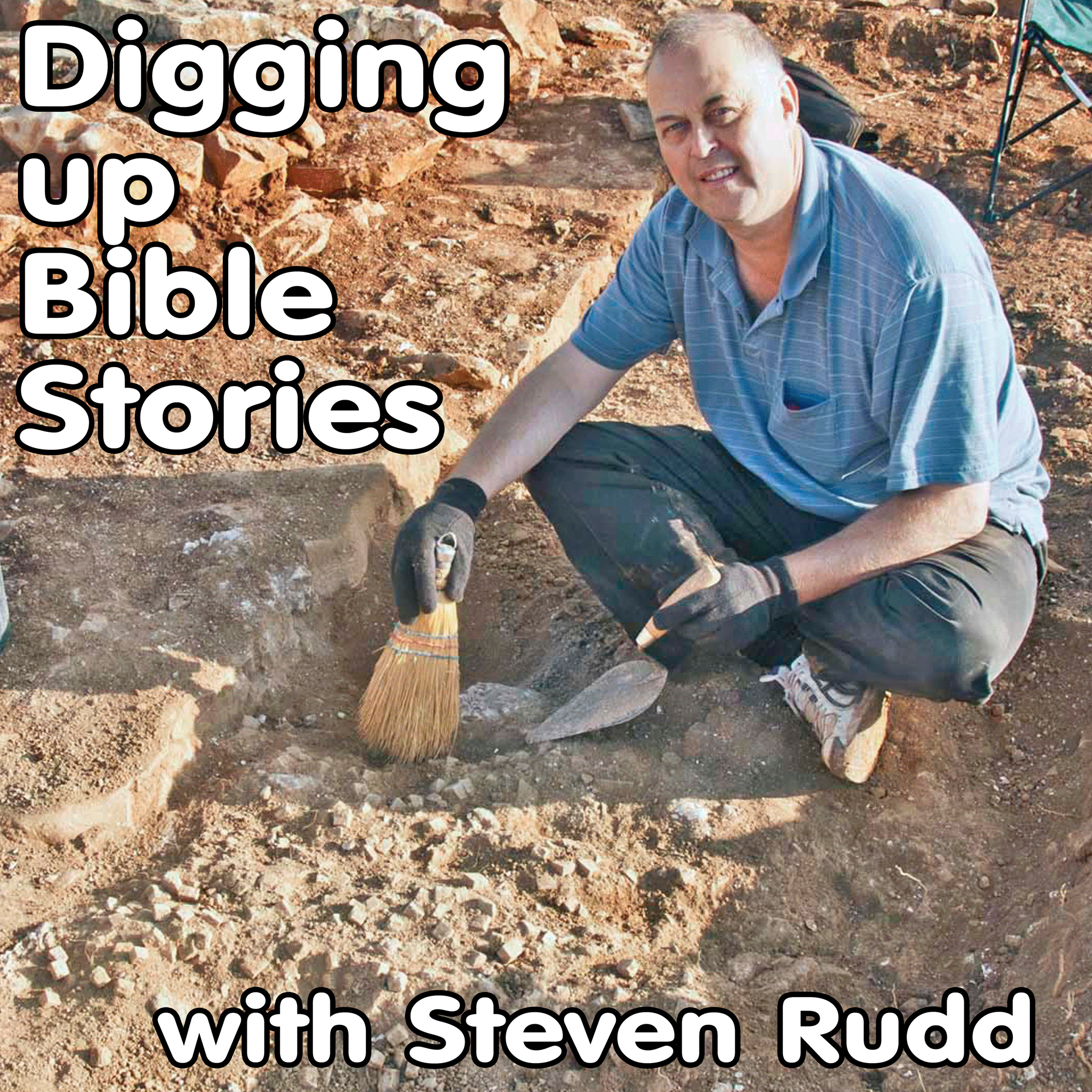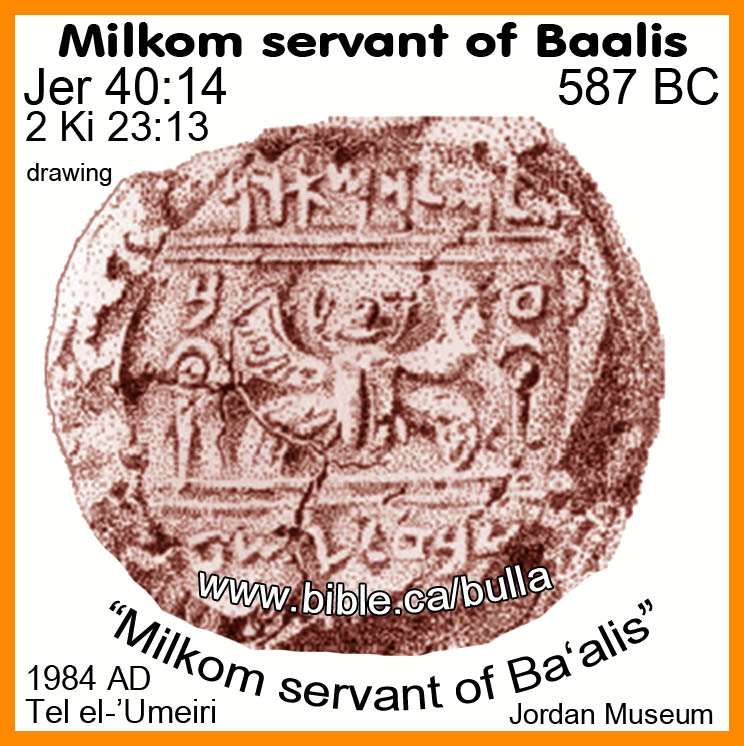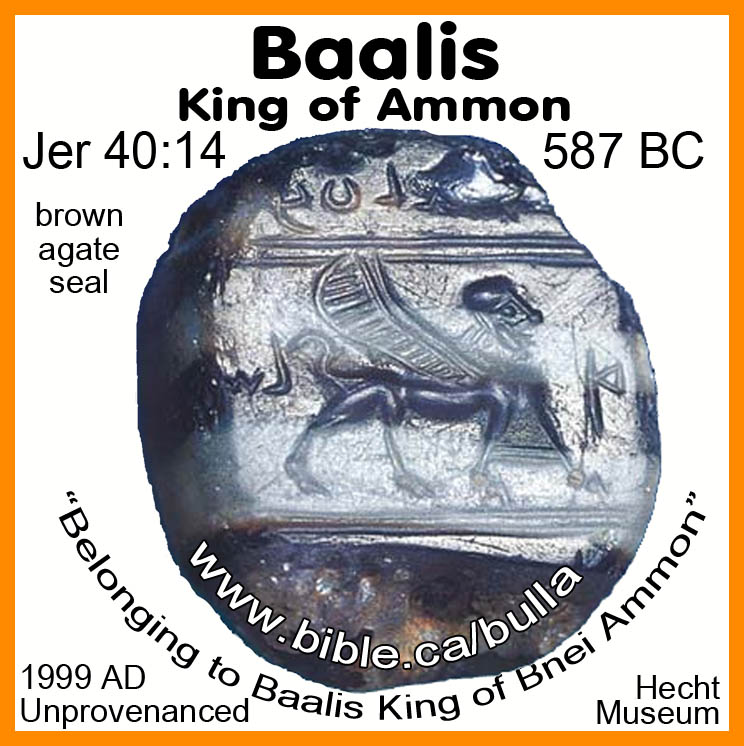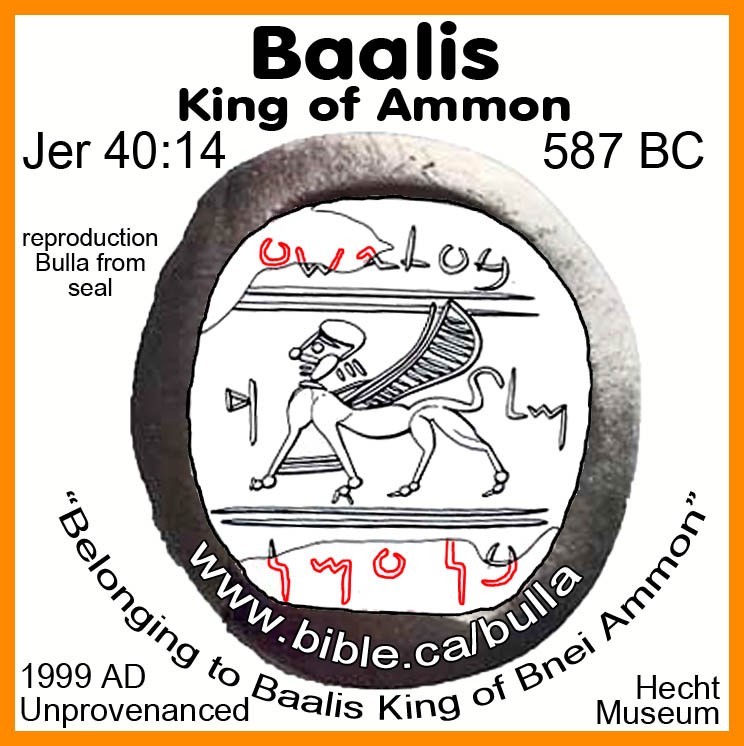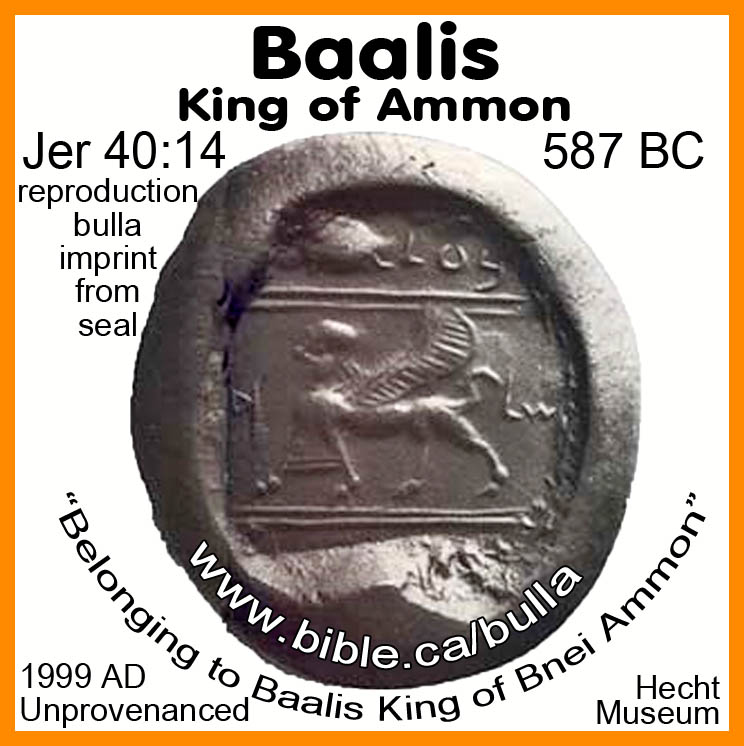Bulla of Milkom servant of Baalis
Bible Bullae from Israel and Judah
|
Bulla of Milkom servant of Baalis "Archaeologists are digging up bible stories!!!" |
|
|
||||||
|
Encyclopedia of Bullae and Seals: The Exhibit: On-line Museum of Bulla and seals Security: How bullae are made to seal papyrus Forgeries: Known fake bullae and seals |
||||||
|
|
||||||
|
Archaeologists are digging up bible stories!!! |
||||||
|
Archaeology is an important science that confirms the historical accuracy of the Bible. Since the Bible refers to hundreds of cities, kings, and places, we would expect to find evidence from on-site excavations. And this is exactly what we have found. The Bible is the most historically accurate book of history on earth. Read the Bible daily! |
|
|||||
|
|
||||||
Encyclopedia of Bullae and Seals of Judea and Israel
|
Bulla "belonging to Milkom servant of Baalis" |
- DIFFERENT BULLAH: "This king has been identified with the Baʿal-yishʿa mentioned on a seal impression found in 1984 at Tell el-ʿUmeiri, just S of Amman in Jordan (Geraty 1984; 1985). It was found in the sift from topsoil excavated near the W rim of the mound about 50 cm above the remains of a major public structure termed the Ammonite Citadel by the excavators. The seal impression itself (19 mm in diameter) was on the flat end of a fired ceramic cone (21 mm in length) which may have served as a stopper with identification for a juglet of unknown contents. The finely conceived and executed seal impression is divided into 3 panels. The top and bottom panels contain the Ammonite inscription, dated paleographically to ca. 600 b.c. (Herr 1985b and fc.). The middle panel depicts typically Ammonite iconography (Younker 1985): a 4-winged scarab beetle pushing a solar ball flanked by standards, solar discs, and crescent moons in an assemblage reminiscent of Zeph 1:4–6. The inscription reads lmlkm-ʾwr ʿbd bʿl-yšʿ, “belonging to Milkom-ʾur, servant of Baʿal-yishʿa (or Baʿal-yashaʿ).” Both of the personal names, that of the owner of the seal and that of the king he served, constitute “firsts.” Milkom-ʾor (“Milkom is light”) or Milkom-ʾur (“Milkom’s flame”), represents the first-known occurrence in which Milkom, the well-known Ammonite divine name, appears as one of the elements in an Ammonite proper name. According to his title, “servant,” this individual would have been a prominent government official in the service of the Ammonite king, Baʿal-yishʿa (“Baal is salvation”) or Baʿal-yashaʿ (“Baal saves”). The latter is identified with the Baalis of Jer 40:14, and this reference to him is his first extrabiblical confirmation—despite Wright’s (1974:3) claim about “Baʿlay” being on the Tell Siran bottle (a misunderstanding of Cross 1973), misinformation perpetuated by Feinberg (1982:272). (ABD, Baalis)
Baalis, King of Ammon: 587 BC: Jeremiah 40:14
"Now Johanan the son of Kareah and all the commanders of the forces that were in the field came to Gedaliah at Mizpah and said to him, “Are you well aware that Baalis the king of the sons of Ammon has sent Ishmael the son of Nethaniah to take your life?” But Gedaliah the son of Ahikam did not believe them." (Jeremiah 40:13-14)
"Belonging to Baalis King of Bnei Ammon"
- "When Jephthah subdued the Ammonites, “he smote them … as far as Abel-keramim” (Judges 11:33), whose ruins today constitute Tell el ‘Umeiri, a Jordanian site about 37 miles east of Jerusalem. Occupied from about 3000 B.C. to nearly 500 B.C., the site has been linked with the Ammonite king Baalis (Jeremiah 40:14) and with Pharaoh Thutmose III (1479–1425 B.C.). In past seasons, excavators have found an early sixth-century B.C. bulla with the inscription, “Belonging to Milkom-or, the servant of Baalyasha” (the Baalis of Jeremiah 40:14), and a jar handle stamped with the cartouche of Thutmose III." (Tell el ‘Umeiri-Madaba Plains Project, BAR 14:06, 1988 AD)
- "What makes this seal especially exciting is that the king who owned the seal, a certain Ba‘alis, is also referred to in the Bible. When the Babylonians conquered Judah in the early sixth century B.C.E. and destroyed Jerusalem, they made Gedaliah, who was from a prominent Jerusalem family, governor of Judah. Gedaliah, however, was soon murdered, an event still commemorated in Jewish tradition by a yearly fast. The assassin was sent by none other than Ba‘alis, king of the Ammonites (Jeremiah 40:13–41:2). Ba‘alis’s seal (shown on the cover of this issue; the seal impression appears below) is made of brown agate with white bands and is in fact quite tiny (.5 inches in diameter and .2 inches thick). A small hole was drilled through the center of the scarab-shaped seal for the setting. On the seal are three lines of script, each separated by double rules:" (Seal of Ba‘alis Surfaces, Ammonite king plotted murder of Judahite governor, Robert Deutsch, BAR 25:02, 1999 AD)
- Line 1: [ע]בעלישׁ[לְ] ([l]b‘lyš[‘]) “[Belonging to] Ba‘ališ[‘]”
- Line 2: מלך (ml/k) “King of”
- Line 3: ן[נעם]ב (b[n’m]n) “B[nei Ammo]n.”
By Steve Rudd: Contact the author for comments, input or corrections.
